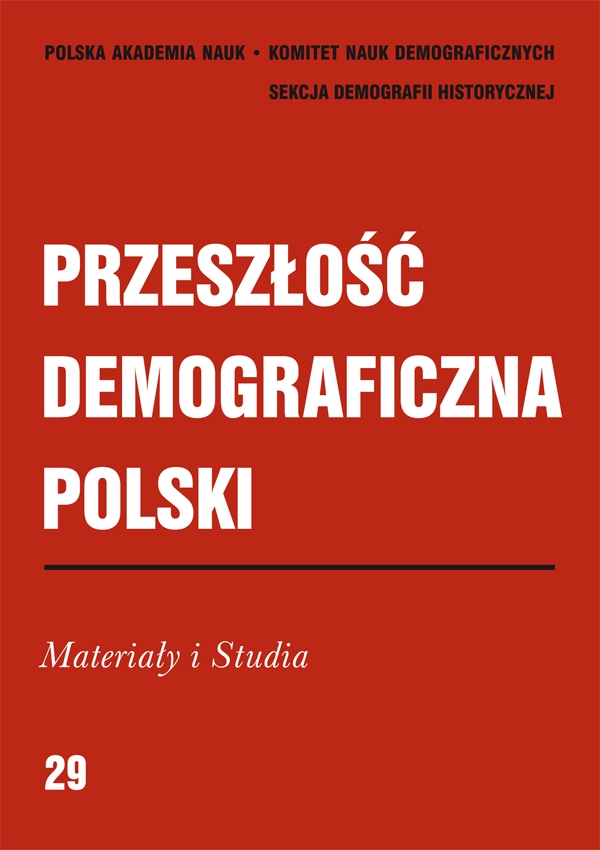Ruch naturalny ludności w parafii juncewskiej w latach 1801−1870 na podstawie ksiąg metrykalnych
Słowa kluczowe:
demografia, księgi metrykalne, ruch naturalny, Juncewo, wiek 19Abstrakt
Natural movement of population in the Juncewo parish in 1801−1870 based on the parish registers
The author uses the aggregative and nominative method to examine the basic elements of the natural movement of population in a chosen rural parish, based on the parish registers from 1801–1870 including both originals preserved by the Archive of the Gniezno Archdiocese and copies held by the State Archive in Poznań.
The researched period was characterized by a relatively mature age of newlyweds: grooms were on average 27 years old and brides — 23.6 years old. The seasonality and model of marriage did not differ from the seasonality and model typical of other parishes in the 19th century.
The analysis of birth seasonality revealed a relation between first child births and marriage seasonality. First child was most often born between the 9th and 13th month after the parents married 56%. Only 2.1% children were born out of wedlock. Premarital conceptions comprised 19.4% of all first child conceptions. Autumn months saw the greatest number of births, and spring months — the smallest.
Despite under-registration of births, the results of the study confirm the widely known higher mortality rate of male infants over female infants. Death seasonality is similar to other parishes, both in terms of sex and age.
Quantitative data obtained by the author prove that the natural movement of population in the Juncewo parish in the studied period resembles the Western-European demographic model.

